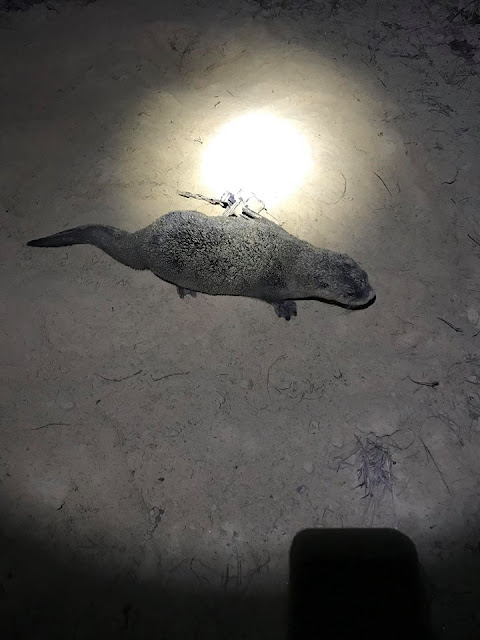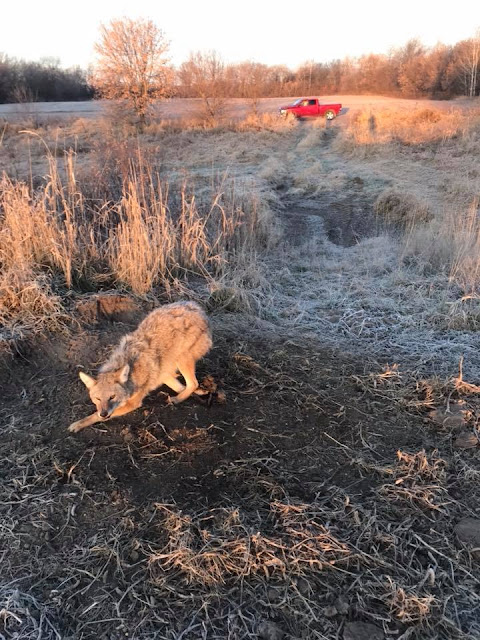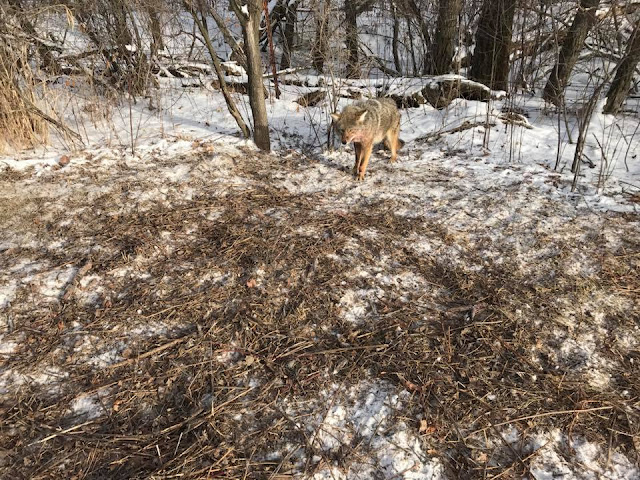Modern day trapping is humane and ethical. The comfort of the animal is of most importance. Traps hold, not hurt. This video depicts an actual Bridger #2 set on my coyote trapline, and demonstrates how the trap fires and holds the animal. If you are against trapping and came to this blog to harass me, please watch this video first:
Wisconsin hunter: bear, deer, furbearers, turkey, nuisance, small game, coyotes. Barefoot.
Monday, December 4, 2017
Friday, October 27, 2017
My first HARVESTED Wisconsin Bobcat!
After a 6 year wait for a tag, releasing 8 bobcats in the past two years, and releasing a smaller one two weeks ago, I FINALLY HARVESTED A BOBCAT!!
Just shy of 27 pounds, female, beautiful spots, amazing cat. I'm so incredibly happy to put my tag on this animal. It's been a busy work week, first a wolf, then a badger, now this cat. Clark County, WI. Full body mount for sure.
Tuesday, October 24, 2017
Thursday, October 19, 2017
Wisconsin Trapping Season 2017-2018
A photo series of the critters I'm catching this season. Updated as I catch them...
 |
| I do have a bobcat harvest tag this season, however I've waited 6 years for it, so I released this young tom because I caught him on the very first night, and my season is 2.5 months long. I really hope I don't regret it later if I'm sitting on an unfilled tag, but either way, releasing a young cat is always a best practice. Caught on a Bridger 2 dogless on a saber drag, using JUST MICE predator bait from Southern Snares and Supply. |
Thursday, September 7, 2017
You've Trapped Fur, Now What?
As a new trapper, you are probably very excited to catch many different furbearers in your area and contribute to the conservation and well-being of the ecosystem in your woods. But many non-trappers, such as bowhunters, upland bird hunters, etc., have no idea on what to do with their pelts after they have trapped an animal. You can look back in the archives for other articles on fur handling, skinning, stretching, etc. This post will explain to you the different avenues you can take for "getting rid" of your furs.
Let's begin by reminding ourselves the different terms used for fur so we are all on the same page:
- Carcass fur: refers to the whole animal frozen unskinned.
- Green fur: refers to the pelt after it's been skinned off the animal/carcass.
- Raw fur: refers to the process after you take green fur and flesh, stretch, and dry it out.
- Tanned fur: refers to a raw pelt that has been sent to tannery & completed the tanning process.
Now let's look at your options on what to do with your fur:
- Keep it!: You always have the option to keep your pelts. I personally keep my "firsts" of every furbearer that I have trapped. If I don't choose to mount the animal full body, then I will have the pelt tanned to hang on the wall. If you choose to keep your pelts for personal use, you MUST get them tanned, whether you do it at home or send to a professional tannery. Untanned furs will not last over time and are prone to shedding, bugs, stink, etc.
- Local Fur Buyers: If you choose to sell your fur to a local buyer, you will need to look ahead of time at their pick-up schedule and when they will be in your area. Sometimes during years where the price of fur is on the decline, buyers will schedule one or two pickups only throughout the season to save on fuel costs, therefore if you miss their pickup days, you may be out of luck for this option before you know it. Several of the most well-known buyers are Groenewold Fur Company, NAFA, Windy Ridge, Moscow Hide and Fur, and many more. You need to know going into a fur buyer that they will need to see your furs up close for inspection, and that you will be paid according to their own opinions. You will also lose a bit of money because a fur buyer is considered a "middle man" in the world of fur.
- Sending to Auction: The best "bang for your buck" is to ship your raw fur directly to a big auction house. The biggest are NAFA and Fur Harvesters. These two auction houses hold events for fur buyers from all over the world. Fur garment makers from France, Italy, etc., send buyers to the auctions to buy the best of the best furs that you may have trapped right in your backyard. These furs are then made into the luxurious coats and hats that you see celebrities wearing or models on the runway-how cool is that!
- Tanning/Internet Sales: If you are a real go-getter and have the money up front, and enjoy figuring out profits, then you can choose the option of handling your own furs and selling them to others like you. You can send your raw fur into a professional tannery, then when you get them back 4-6 months later, you can list them online to sell at a profit. You will need to assess what you think the pelt is worth raw, then how much you have into tanning, then come up with a price that you think is fair but you also make money on. Tanned pelts sell well on Facebook sales groups, Craigslist, Ebay, among others. These are also a favorite at local flea markets and farmer's markets, and people enjoying hanging them on their fireplaces, in cabins, or sending them in to be made into hats.
Monday, July 24, 2017
Wolf Reactions to New Lures
I put out several new lures from the Southern Snares and Supply line this week and was able to get dozens of videos from these two males from last year's litter. One is collared as part of the monitoring that the Wisconsin DNR conducts on our wolf numbers.
EDIT: The DNR asked me to add in this blog that I did NOT put these lures out FOR wolves, but rather I had them out for my bear tag, which is legal, however I was not expecting the wolves to come in. After the wolves came in, I did not place more lure, per WI law.
What I find so very interesting is the territorial response; the rolling, urinating, rubbing, backscratching, etc. These wolves stayed in this one spot for OVER 10 MINUTES!! If there were an open trapping season, I would have caught both these wolves at this set. Also study the paw placement for future trapping.
Watch more videos on my public Facebook page: https://www.facebook.com/media/set/?set=a.10155362679062881&type=1&l=0a5d075ba6
Thursday, February 2, 2017
My First Wisconsin Otter!
I've had to wait 3 years to finally draw a Central Zone Otter harvest tag here in Wisconsin. I started setting on Nov. 10th, a few days after the season opened. I had quite a few beaver plug up my sets, and started to get discouraged, but last night I was finally able to connect on this 26 pounds, 46 inch big male! I'm getting him mounted because it's the hardest I've ever worked to catch one specific animal.
Subscribe to:
Posts (Atom)








































